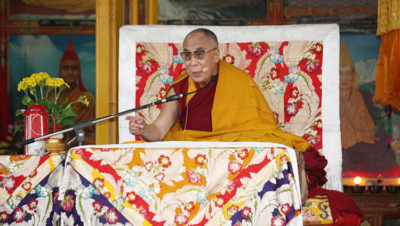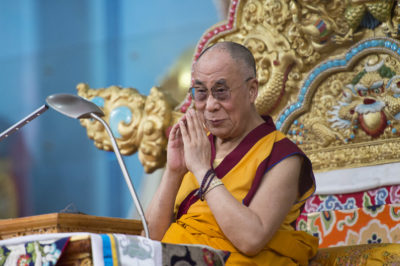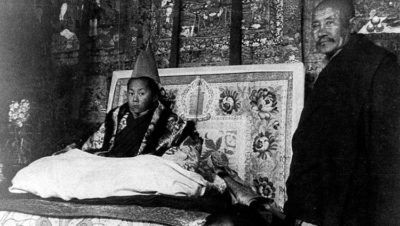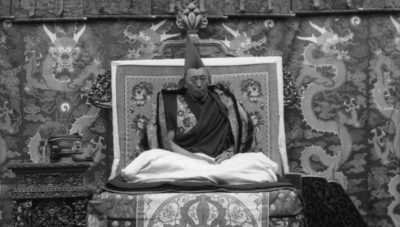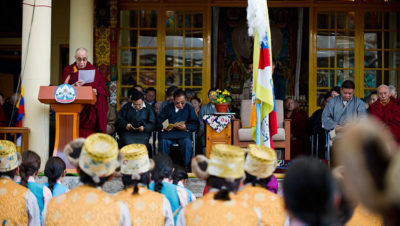
His Holiness the Dalai Lama reading his statement on the 52nd anniversary of Tibetan National Uprising Day at the Main Tibetan Temple in Dharamsala, HP, India on March 3, 2011. (Photo by Tenzin Choejor/OHHDL)
10 March 2011. Today marks the 52nd anniversary of the Tibetan people’s peaceful uprising of 1959 against Communist China’s repression in the Tibetan capital Lhasa, and the third anniversary of the non-violent demonstrations that took place across Tibet in 2008. On this occasion, I would like to pay tribute to and pray for those brave men and women who sacrificed their lives for the just cause of Tibet. I express my solidarity with those who continue to suffer repression and pray for the well-being of all sentient beings.
For more than sixty years, Tibetans, despite being deprived of freedom and living in fear and insecurity, have been able to maintain their unique Tibetan identity and cultural values. More consequentially, successive new generations, who have no experience of free Tibet, have courageously taken responsibility in advancing the cause of Tibet. This is admirable, for they exemplify the strength of Tibetan resilience.
This Earth belongs to humanity and the People’s Republic of China (PRC) belongs to its 1.3 billion citizens, who have the right to know the truth about the state of affairs in their country and the world at large. If citizens are fully informed, they have the ability to distinguish right from wrong. Censorship and the restriction of information violate basic human decency. For instance, China’s leaders consider the communist ideology and its policies to be correct. If this were so, these policies should be made public with confidence and open to scrutiny. Continue reading
